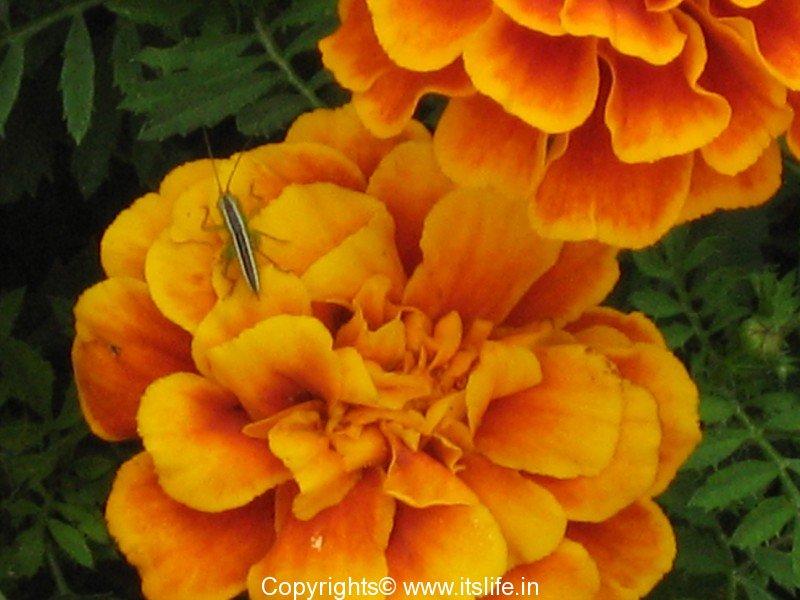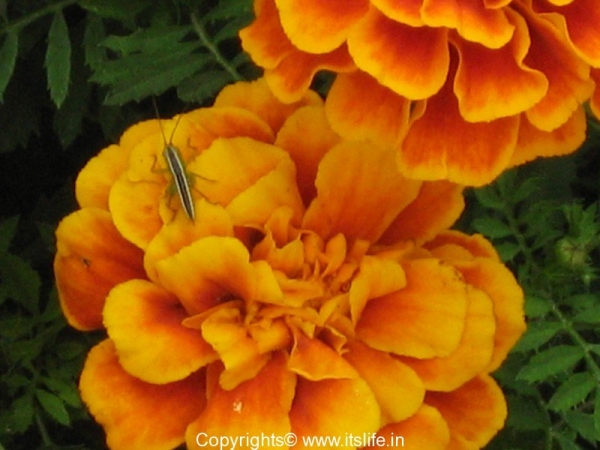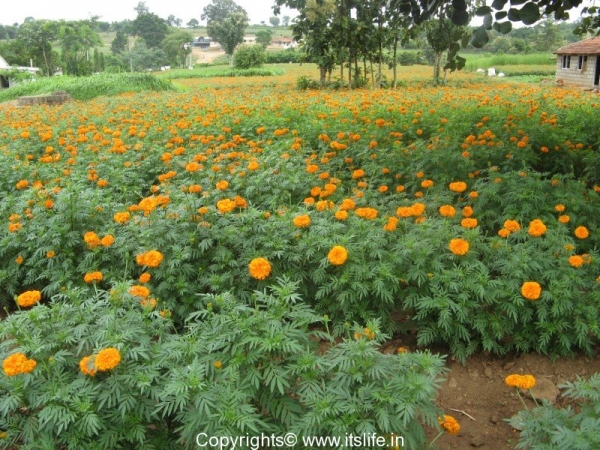I call Marigolds “Happiness flowers” as they are the happiness quotient in a garden.
The botanical name of Marigold is Tagetes erecta and belongs to family Asteraceae. There are 56 species of this annual plant and is grown all over the world. The other common names are French Marigold, African/American Marigold, Tall Marigold (species: Tagetes), Pot Marigold (Species: Calendula), Sthulapushpa (Sanskrit), Genda Phool (Hindi), Chandu Hoovu (Kannada), Mary’s Gold.
The plant grows to a height of 3 – 6 feet. The leaves are green and pinnate with a musky smell. The flowers are golden yellow, orange, yellow-brown, and maroon-yellow. Marigold flower usually blooms to 6 cm in diameter.
The plant has the property to repel insects. Portuguese explorers discovered them in the wilds of Brazil in the early 16th century and the seeds found their way through them to India.
In India and Nepal marigold garlands are used to decorate the doorway on festivals, weddings, and to worship gods.
The saffron color is sacred to Hindus and represents renunciation and hence the Ascetic wear saffron robes. On Vijyadashami day, Marigold flowers are used extensively in North India. Marigold is extensively cultivated in India to meet the demands.
Marigolds are used to decorate the graves on Day of the Dead in Mexico. Christians offer Marigold to Mother Mary on the day of the Feast of the Annunciation.
Medicinal Use
Marigolds are used to strengthen the heart. Compound Lutein is extracted from Marigolds and is an anti-oxidant that protects the eye. The leaves are used to heal conjunctivitis and wounds.
Other Uses
Marigolds are used to manufacture food color. Marigold petals are used as a herb in cooking. Essential oil is extracted from this flower to produce perfumes and for aromatic therapy.
Propagation
Propagation of Marigold is by seeds. Plant the saplings in well-drained soil. Water every day and feed with a good fertilizer every 15 days.




